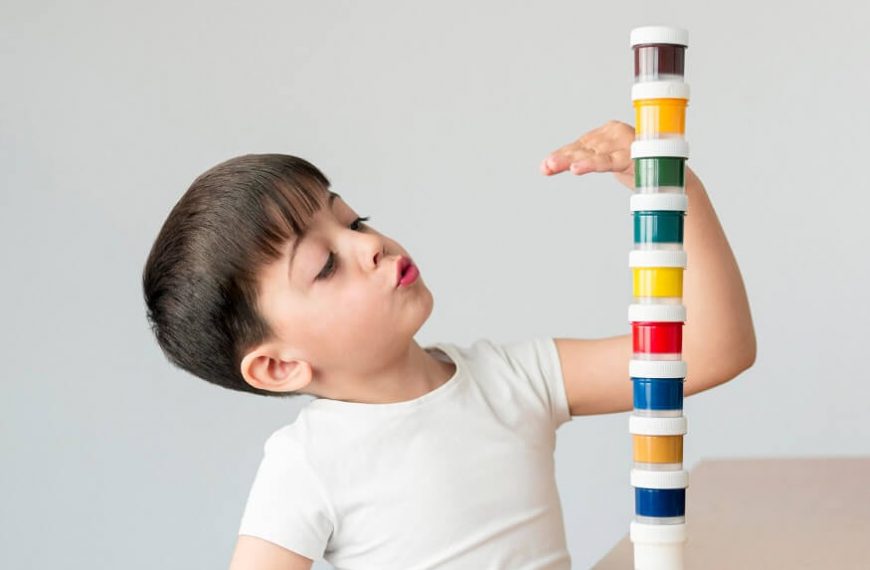Unveiling the Power of Sequencing in Preschoolers
Imagine a world where every event unfolds randomly, with no sense of order or progression. It would be comparable to watching scenes from a movie play out in any order or reading a book with its pages randomly rearranged. Doesn’t that seem perplexing? This is precisely what the world can feel like to a preschooler who hasn’t yet grasped the concept of sequencing. Sequencing, an essential cognitive skill, allows us to make sense of the world by perceiving patterns, organising information, and predicting what comes next. Now, let’s translate this understanding into the realm of early childhood education and delve into the fascinating world of sequencing for preschoolers.
Sequencing is the ability to understand and follow a specific order or a series of events. It is the cognitive skill that enables a child to see the logical progression in tasks, stories, and daily routines. It’s like putting together the pieces of a puzzle to create a comprehensive picture. This skill is not just crucial; it’s a fundamental pillar that supports a child’s future learning experiences. From following multi-step instructions to comprehending the narrative of a story or even executing daily tasks, sequencing skills play a vital role in a child’s cognitive, linguistic, and social development.
Let’s now investigate the core of the issue. How do we introduce and nurture sequencing in preschoolers in a manner that is both engaging and educational? The answer lies in the heart of the play – games.
Sequencing games for preschoolers are an excellent tool to foster this critical skill. They work on the principle of ‘learning through play,’ a widely accepted educational approach that believes in the power of play to stimulate learning. These games transform the learning process into a delightful adventure, sparking curiosity, and fostering a genuine love for learning. This playful method engages children on a level they can relate to, making the process of learning sequencing skills feel less like a chore and more like a thrilling exploration.
A simple yet effective sequencing game is “What Comes Next?” In this game, you can use a series of pictures, objects, or even actions, and encourage the child to predict what comes next in the sequence. This game not only teaches the basics of sequencing but also fosters pattern recognition, a crucial aspect of sequencing skills. For example, you could line up a series of coloured blocks in a specific pattern and ask the child to continue the sequence. This game is versatile and can be tailored to suit the child’s interests, keeping them engaged and excited.
Another brilliant game that introduces sequencing to preschoolers is “Story Sequencing.” In this game, children are given a set of images depicting different parts of a story. The goal is for them to arrange the pictures in the correct order. This not only promotes sequencing skills but also enhances comprehension skills, promotes logical thinking, and encourages creative storytelling. For instance, a story sequence could involve a butterfly’s life cycle, where children can learn about natural processes in addition to honing their sequencing abilities.
These sequencing games for preschoolers are not merely for fun. They offer children a fascinating and safe atmosphere where they can experiment, fail, learn, and develop. They encourage active involvement, promote problem-solving, and foster a sense of accomplishment, all while improving sequencing skills.
Let’s consider the long-term advantages of developing sequencing abilities at a young age. The effects are significant and widespread. A solid grasp of sequencing in the preschool years sets the stage for future academic success. It aids in reading comprehension, mathematical understanding, and scientific reasoning. Sequencing skills also play a crucial role in enhancing a child’s communication skills and their ability to follow instructions. On a practical level, sequencing skills help children perform everyday tasks more efficiently, from getting dressed to brushing their teeth. To clean your teeth, for example, you must first wet the brush, then apply toothpaste, and then brush in a circular motion. You then rinse your mouth and then rinse the brush. Learning to sequence these steps not only fosters independence but also gives the child a sense of accomplishment.
While some preschoolers might immediately take to sequencing games, others might require more time, practice, and reinforcement. The key is to keep studying enjoyable, interesting, and stress-free. This journey may be joyful and fruitful for both the youngster and the adult with a little patience, encouragement, and lots of high-fives along the way.
Another aspect to consider is the incorporation of sequencing skills into daily routines. Regular activities, like getting ready for school or setting the table, can provide practical, real-world examples of sequencing. These instances can serve as teachable moments, reinforcing the concept of sequencing in a natural and relatable context.
Beyond the home and classroom, technology too offers tools to facilitate the learning of sequencing skills. Various apps and online games are designed specifically with this purpose in mind, offering interactive and engaging platforms for children to practise sequencing. While technology can be an excellent supplementary tool, it is crucial to balance screen time with physical play and hands-on activities.
In conclusion, sequencing for preschoolers is an indispensable skill that plays a pivotal role in a child’s overall development. It is the foundation for solid reasoning, the precursor to problem-solving, the foundation for following instructions, and the foundation for effective communication. As we engage in this rewarding endeavour of teaching sequencing, let’s remember to celebrate each small victory, nurture their curiosity, and foster a lifelong love for learning.
Teaching sequencing might seem like a daunting task, akin to trying to solve a complex jigsaw puzzle. But with the right approach, patience, and a bag full of exciting games, we can successfully introduce this complex cognitive skill to our preschoolers, making the world a little less confusing and a lot more comprehensible.
So here’s to unlocking the magic of sequencing – one game, one skill, and one preschooler at a time! They say – “The journey of a thousand miles begins with a single step.” In our case, it begins with the first piece of the sequence.
At EuroKids, we believe in the holistic development of the child. Concepts like EUPHONICS, MATHLAB & SCIENTIFICSPARK help in nurturing the mind of the child. If you want to know more about our carefully curated curriculum, head over to the EuroKids centre nearest to your house!
















